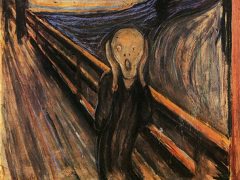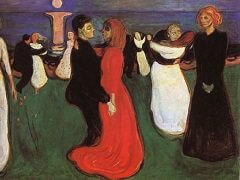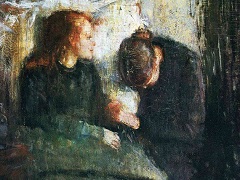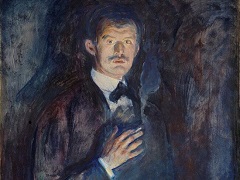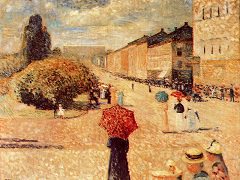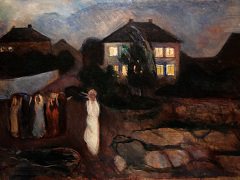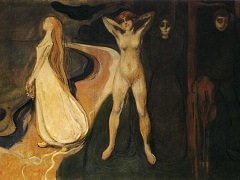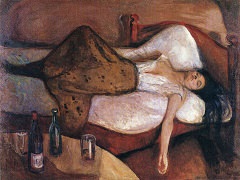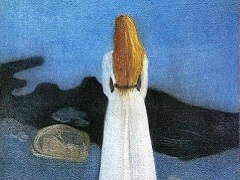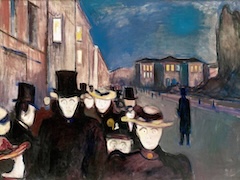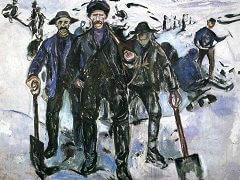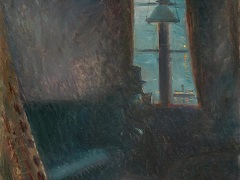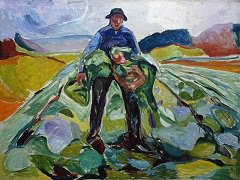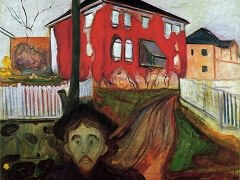Death in the Sickroom, 1895 by Edvard Munch
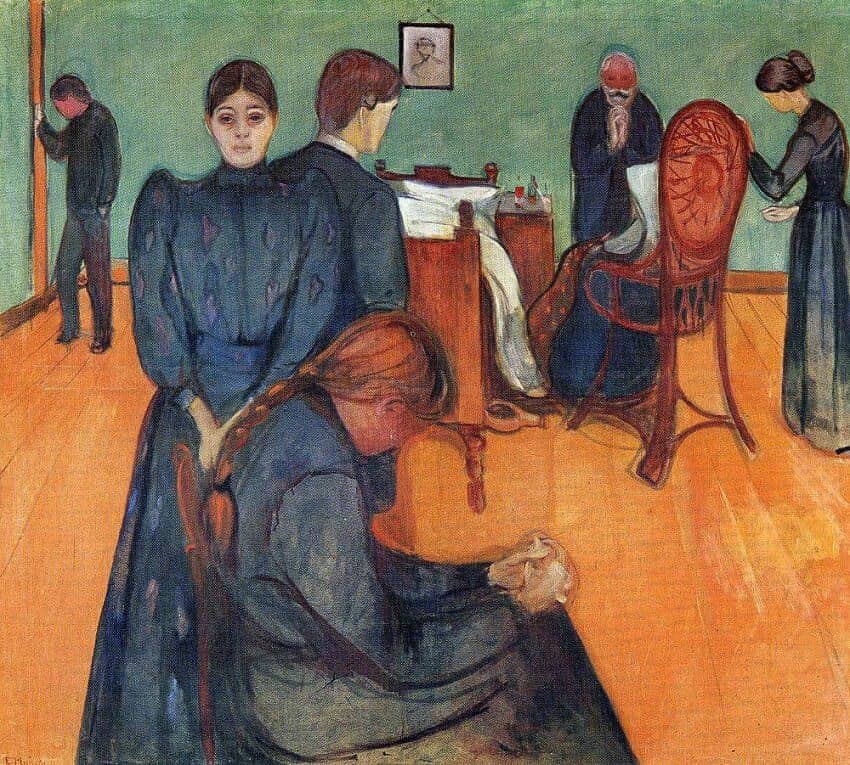
Death in the Sickroom, 1895, condenses the despair and anguish that Munch and his family experienced as a result of the ravages of tuberculosis:
The illness followed me through all my childhood and youth - the germ of consumption placed its blood-red banner victoriously on the white hankerchief - my loved ones died one by one. One Christmas night I lay 13 years old - the blood running out of my mouth - the fever raging in my veins - the anxiety screaming inside of me. Now in the next moment you shall stand before the judgement - and you shall be doomed eternally ...'.
This Protestant sentiment (revealed by Munch's praying father in the background) and its tone of terror may explain his rebellion in the ranks of the Christiania Boheme. In this work which recorded his younger sister Sophie's shock and despair, the family is both isolated by grief, and unified through loss. The figure leaning against the door-jamb in the left background is thought to be Munch, while Inger stares haggardly out at us from the left foreground and the man with his back to her is their brother Andreas. The sickly green wall and etiolated black-framed picture are symbols of their exhaustion, as is the uncomfortable orange colour of the floor, which is reminiscent of interiors by Vincent van Gogh.
Reverting to the theme of the death of Sophie, Munch produced a work very different from The Sick Child. Now the whole family is shown, and the emphasis shifts from the experience of the dying girl to that of the mourning relatives. The child sits facing diagonally to the rear, largely invisible both to us and to all the mourners except her praying father; she is already absent from their lives. What we do see of her is partly transparent, as though she were already beginning to dematerialize. Each of the mourners reacts differently and there is no intercourse among them; confronted with the loneliness of death, each retreats into his or her lonely self. The younger sister Laura, in the extreme foreground, is the only other figure seated, in a profile pose of sorrowful meditation. Possibly her position echoing that of her sister indicates that she too was destined to suffer at an early age from an incurable illness, though mental instead of physical. Or perhaps the whole scene behind her pictures her distorted memory of the terrifying event. The painting is very much in Munch's version of the synthetist style - flattened areas enclosed by strong contours. The receding floorboards converge towards different vanishing points approximately on a horizontal axis, thus flouting naturalistic perspective. This has the effect of both flattening and widening the room.

